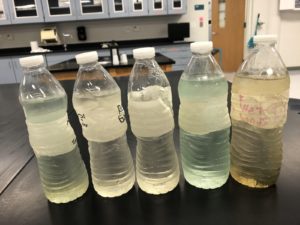An Inquiry-based Study of a Pipeline

To view the photo-rich magazine version, click here.
Originally appears in the Spring 2021 issue.
By Stacy Cameron
The construction of a natural gas pipeline (Nexus) has occurred through my school community in Northeast Ohio. The pathway of the pipeline may impact my students’ homes, natural reservoirs, and water systems. The pipeline will transport 1.5 billion cubic feet per day of shale gas to markets throughout northeast Ohio, Michigan, and parts of Canada[1]. The presence of natural gas pipelines raises ecological concerns for residents of communities located along the projected pathway of construction. Specifically, in Ohio, the construction areas are in numerous exponentially growing cities and suburban communities[2]. Public concerns center around water quality and its connection to hydraulic fracturing[3]. Given this pipeline’s construction, I wanted a central component of my high school Ecology class to be associated with learning about its environmental threats through scientific inquiry.
With the COVID-19 pandemic having impacted hands-on student engagement for many schools last spring, there was great need for when schools returned in the fall. Thus, I developed a student-driven inquiry-based unit to tie our exploration of water quality testing and anthropogenic effects into an aquatic ecology unit. Students questioned whether the pipeline construction impacted the pH and dissolved oxygen concentration of different water sources in our community.
This content is restricted to subscribers only.
If you are not yet a subscriber, please consider taking out a subscription here.
If you are an existing subscriber, kindly log in or contact us at info@greenteacher.com for more information.





